Coathanger Wide Field
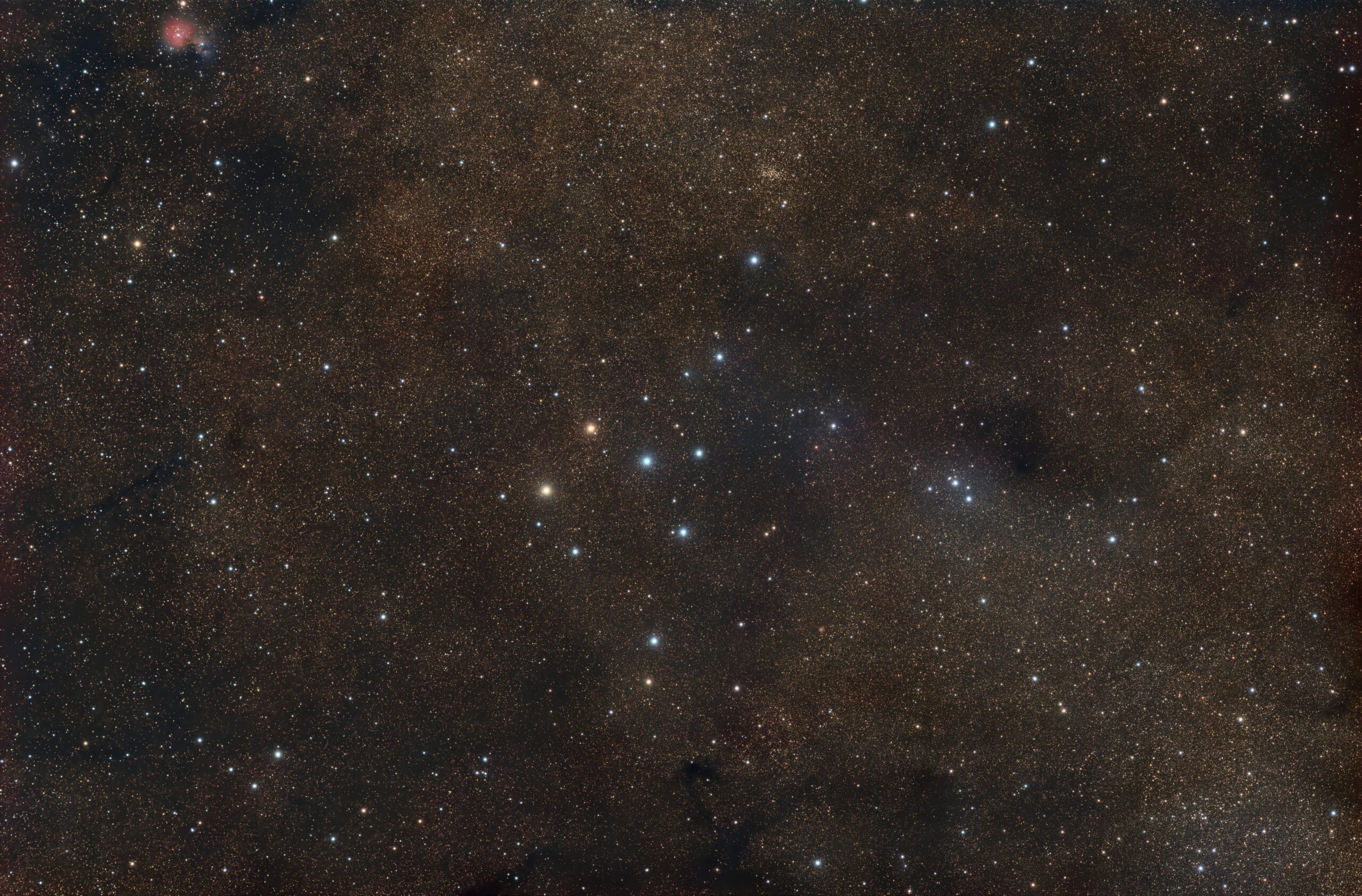 Click image for full size version
Click image for full size version
August 28, 2025
The Coathanger is an asterism — a pattern of stars — that looks unmistakably like its namesake (Turn the image 90 degrees clockwise to see it more easily). It is also catalogued as Brocchi’s Cluster and Collinder 399. I’ve looked at this hundreds of times in binoculars; it is a summer favourite. It can even be seen with the naked eye in a dark sky. I have imaged it before in a much narrower field.
The Coathanger was long thought to be a star cluster — a group of gravitationally-bound stars. However, it was recently determined that it is a chance alignment of stars. The many dark lanes within the image are part of the Milky Way’s dust lane. I prepared an annotated image that identifies some of the dark features in the image, as well as emission and reflection nebulae. The pretty star cluster near the top centre of the image is NGC 6802. Sh2-82 is at the top left. It is a nebula with emission (reddish), reflection (bluish) and dark (brownish) components. I imaged the so-called Little Cocoon Nebula at higher resolution in 2022.
This is my first image with this telescope that used a Primalucelab electronic focuser, the Sesto Senso 2. It sure worked well!
Tekkies:
Acquisition, focusing, and control of Paramount MX mount and other equipment with N.I.N.A. and TheSkyX. Unguided, Focus with Primalucelab Sesto Senso 2. Equipment control with Primalucelab Eagle 4 Pro computer. All pre-processing and processing in PixInsight. Acquired from my SkyShed in Guelph. Acquired under average transparency and seeing and no Moon from August 21 – 27, 2025.
Sky-Watcher Esprit 70 EDX refractor, QHY367C Pro camera with Optolong L-Quad Enhance filter.
62 x 2m = 2hr 04m
Preprocessing: The WeightedBatchPreProcessing script was used to perform calibration, cosmetic correction, debayering, weighting, registration, integration and Drizzle integration of all frames (2x drizzle, 1.0 Drop Shrink, Gaussian kernel).
Gradient Removal: SprectrophotometricFluxCalibration was applied followed by MultiscaleGradientCorrection.
Colour Calibration: BlurXterminator was applied to the RGB master with Correct Only selected, followed by SpectrophotometricColorCalibration.
Deconvolution: BlurXterminator was applied to the RGB master with Automatic psf , star sharpening set to 0.5, and non-stellar set to 0.9.
Linear Noise Reduction: NoiseXterminator was applied with settings Amount=0.9 and Iterations=4.
Stretching: HistogramTransformation was applied to make a pleasing image with background approximately 0.1.
Nonlinear Processing
Star Removal: StarXterminator was used to remove the stars from the master, with default settings, except Large Overlap was selected and halos were decreased by 10% (0.1). The stars-only image was retained.
Nonlinear Noise Reduction: NoiseXterminator was applied to the starless image with Amount=0.9 and Iterations = 4. This was followed by a pass of Convolution with default settings except Std Dev = 12.
Re-stretch: HistogramTransformation was used to boost contrast in the starless image by moving the dark point to the toe of the histogram and slightly decreasing the mid-point slider.
Contrast Enhancement: LocalHistogramEqualization was applied twice to Sh2-82, the red and blue nebula in the upper left of the image. A Contrast Limit of 1.5 and 1 iteration was used for each LHE application (scale 50, strength 0.25; scale 300, strength 0.18).
Contrast, Brightness and Colour: Brightness, contrast, hue, and saturation were adjusted in several iterations using CurvesTransformation.
Stars-only steps: The CIE L* channel (i.e. the lightness channel) was extracted from the stars-only image and then applied to the star image as a mask. CurvesTransformation’s Saturation slider was used to boost colour in the stars.
Star Restoration: The PixelMath expression combine(starless, stars, op_screen()) was used to combine the starless starless image with the stars-only image. The StarReduction script was applied with small star protection enabled (Tranfer method, strength 0.4) to slightly reduce the larger stars.
Final Steps: Background, nebula, and star brightness, contrast, and saturation were adjusted in several iterations using CurvesTransformation with masks as required. The imaged was downsampled x2 to keep file sizes manageable. Full resolution image available upon request. ICCProfileTransformation (sRGB IEC61966-2.1; Relative Colorimetric with black point compensation) was applied prior to saving as a jpg. The finder chart was made using the FindingChart process. The annotated image was made with the AnnotateImage script.

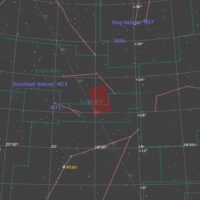
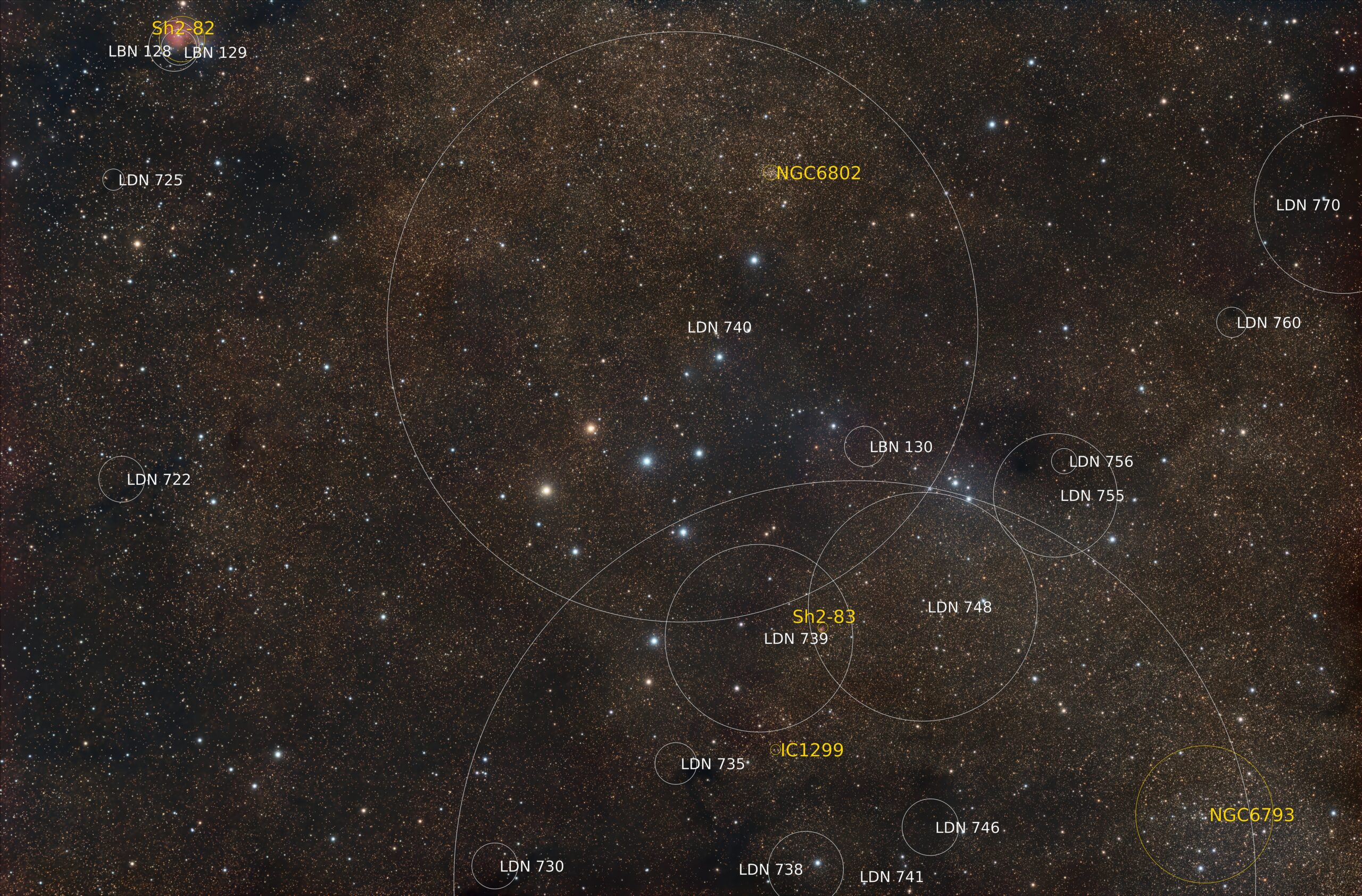
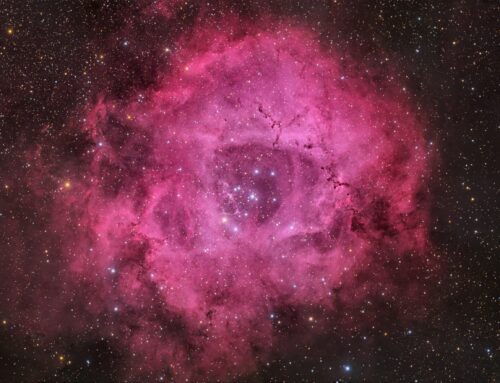
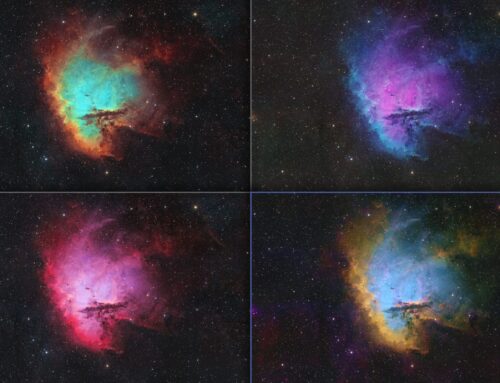
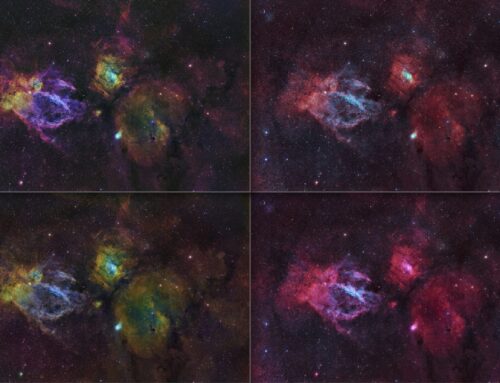
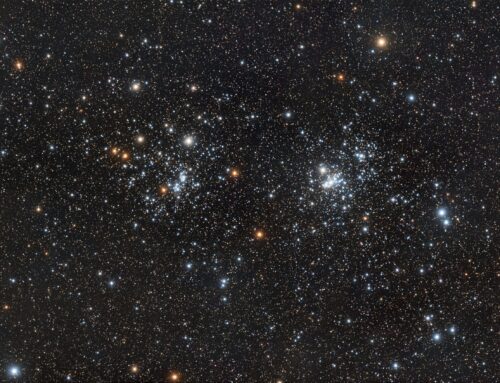
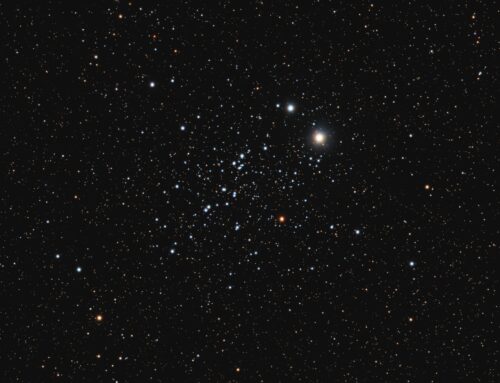
Leave A Comment